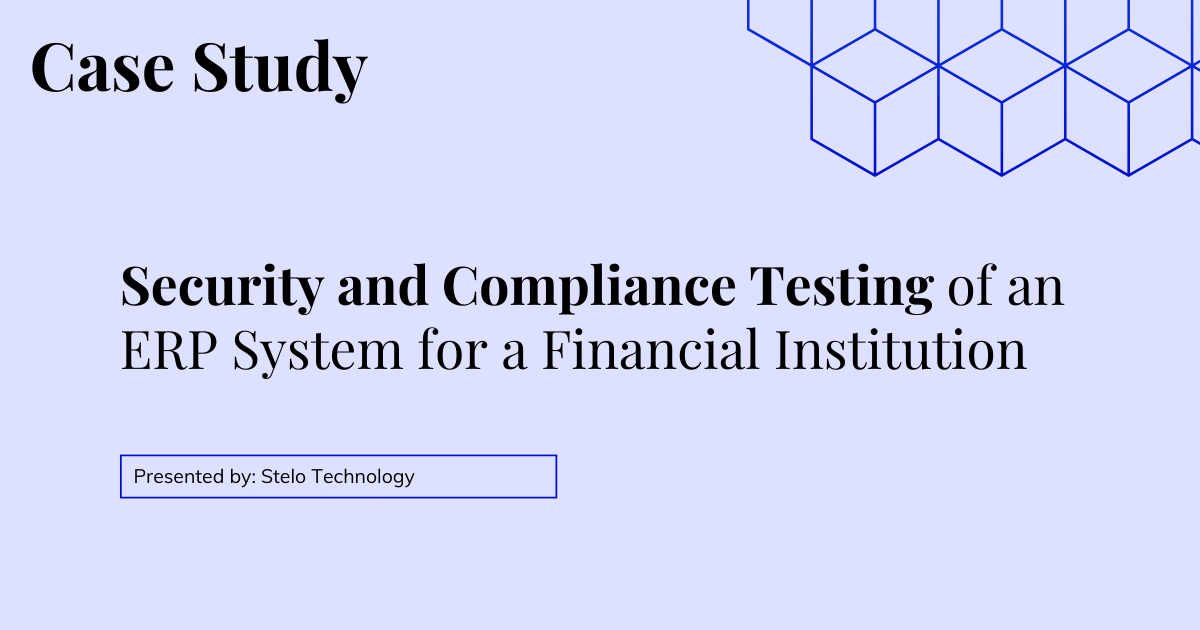The primary goal was to ensure that the ERP Security Testing for Finance adhered to industry security standards and met all relevant regulatory compliance requirements. This was crucial for maintaining the integrity and confidentiality of financial data and for protecting against potential cybersecurity threats.
Scope for ERP Security Testing for Finance

The project involved comprehensive security testing of the ERP system, which included:
- Penetration testing to simulate external and internal attacks.
- Vulnerability assessments to identify security weaknesses.
- Compliance checks to ensure adherence to laws and regulations such as GDPR, HIPAA, and SOX.
Key Activities
- Identifying Security Requirements:
- Gathered detailed security requirements aligned with the financial industry’s standards.
- Conducted interviews with stakeholders to understand specific security expectations and regulatory needs.
- Executing Security Tests:
- Implemented a series of penetration tests to identify exploitable vulnerabilities.
- Conducted automated and manual testing phases to cover a broad spectrum of security threats.
- Assessing Vulnerabilities:
- Utilized leading security tools and methodologies to detect and prioritize vulnerabilities.
- Developed a risk matrix to categorize vulnerabilities based on their severity and potential impact on the business.
- Ensuring Data Protection:
- Reviewed and optimized data encryption practices.
- Implemented strict access controls and authentication protocols to safeguard sensitive information.
- Verifying Compliance with Regulations:
- Performed detailed compliance audits to ensure the ERP system met GDPR, HIPAA, and SOX regulations.
- Updated documentation and system configurations to meet compliance standards.
Challenges
- Integration with Legacy Systems:
- The ERP system needed to integrate seamlessly with older legacy systems, which posed significant security risks due to outdated protocols and software.
- Complex Regulatory Requirements:
- Navigating through the complex maze of financial regulations was challenging, especially in adapting the ERP system to comply with multiple standards.
- Resource Constraints:
- Limited budget and personnel delayed the testing phases and extended project timelines, impacting overall project delivery.
Solutions
- Custom Security Patches:
- Developed custom security patches for legacy systems to enhance their security posture without requiring complete system overhauls.
- Regulatory Compliance Framework:
- Established a robust compliance framework that mapped out each regulation requirement to specific system functionalities.
- Enhanced Project Management:
- Adopted agile project management techniques to optimize resource allocation and streamline the testing process.
Ready to enhance your software quality and accelerate your time to market? Contact us today at sales@stelotechnology.com to request a customized quote for your business!
Outcomes
- Enhanced Data Security:
- Significantly strengthened the security of the ERP system, reducing the vulnerability to cyber-attacks and unauthorized access.
- Mitigated Risks of Data Breaches:
- Proactively addressed potential security threats, substantially lowering the risk of data breaches and associated financial and reputational damages.
- Ensured Compliance with Legal and Regulatory Standards:
- Achieved full compliance with GDPR, HIPAA, and SOX, ensuring that the financial institution could operate without the risk of legal penalties.
Conclusion
This security and compliance testing project not only enhanced the ERP system’s security but also aligned its operations with essential legal standards, thereby supporting the financial institution’s mission to provide secure and compliant financial services.


